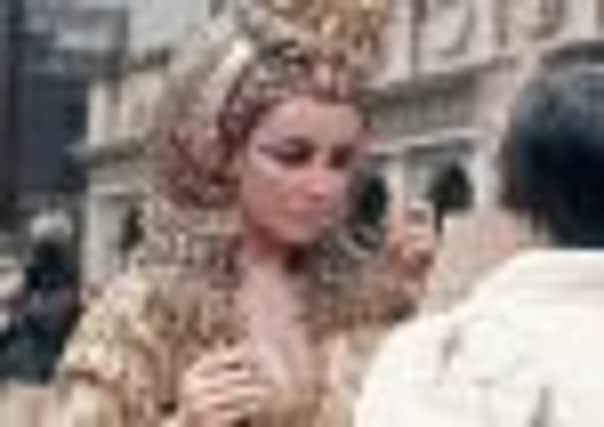Credits roll for last time on life of the ultimate movie star


And so the greatest film star the world has ever seen is gone.
Elizabeth Taylor, double Oscar winner, collector of diamonds and husbands, and grande dame of melodrama on screen and off, slipped quietly away at the age of 79. She died in Los Angeles, the factory town that has been her home since she broke into films in 1942, aged nine. And as the tributes began to pour in so the world can reflect on an extraordinary woman who lived several lives, and all of them on the movie screen.
Advertisement
Hide AdAdvertisement
Hide AdElizabeth Rosemond Taylor was a product of the movies. In 1995 star biographer Donald Spoto claimed she had been cruelly thrust into the limelight by her mother, Sara. Taylor later concurred with Spoto’s claim. The entire family had moved to the United States in early 1939. Elizabeth was only nine when her mother arranged for them to attend an afternoon tea party in Beverly Hills.
Shortly after, Elizabeth was signed to a contract by Universal Pictures which provided a guaranteed salary of $100 for 20 weeks. After first dismissing Taylor as indifferent and talentless, Universal let her go. Step up Metro-Goldwyn-Mayer, seeking an English-accented girl for the role of Priscilla in Lassie Come Home. After just a week of coaching from Sara, Elizabeth was on set, thrust into a strange new world that would become the rest of her life. Naturally, the studio wanted to make changes. Her name, it said, should be changed to Virginia Taylor. The family refused.
“They wanted to remove the mole from my face, too,” said Elizabeth years later. “That became my trademark! They wanted to change the shape of my mouth, my eyebrows – and I said no.” Thus it was that a reluctant little girl was fashioned – or manufactured – into the perfect movie star. She metamorphosed rapidly from child star to smouldering ingénue. When she blossomed into a voluptuous teenager, the studio wasted no time in squeezing her into low-cut gowns. “There was no teenage life for Elizabeth,” said Debbie Reynolds, a contemporary and later the victim of Taylor’s grief and spoiled self-absorption when she stole her husband, Eddie Fisher. She married for the first time in 1950 to hotel chain heir Nicky Hilton. She was 17. In 1952 she wed debonair English actor Michael Wilding, a man 20 years her senior. It lasted five years. During the 1950s her career was at its height. Movies like A Place in the Sun (with Montgomery Clift) Giant (with Rock Hudson and James Dean), Cat on a Hot Tin Roof (with Paul Newman) and Butterfield 8, for which she won her first Oscar, are evidence of her ability and star appeal. There are those who claim that Taylor was romantically drawn to impossible beaus – impossible because they were homosexual. Her closest relationships – outside her seven husbands – were with gay men, among them Dean, Clift, Roddy McDowell and Hudson.
And of the husbands, only two appear to have been the real McCoy: rumbustious movie mogul Mike Todd, producer of Around the World in 80 Days and melancholy Welsh lion Richard Burton, who she married twice. The pairing of Taylor with Richard Burton on Cleopatra in 1960 might have seemed like odd casting: she was the titular Egyptian queen; he was Mark Antony. It was the ultimate movie goddess versus the stage star. Genius casting based on the idea that opposites attract. What no-one could have anticipated is that he and Taylor would embark upon a destructive, scandalous affair that would rapidly spiral out of control. It alienated wives, husbands, friends, family and colleagues. And it put them on the front pages of practically every newspaper on the planet. They loved one another, consumed one another and, perhaps as a result of the constant publicity, became the hottest item in movies.
Advertisement
Hide AdAdvertisement
Hide AdAt 34, Taylor gave arguably her finest performance: as the shrewish wife to Burton’s grey academic in Who’s Afraid of Virginia Woolf? It garnered her a second Oscar; this one she truly deserved. After that it was all over. Burton, wedded to the bottle, aged badly. Taylor got fat. By 1980 her movie career was at an end and she devoted the rest of her life to charity work, principally her AIDS foundation formed after the death in 1985 of her close friend Rock Hudson. The final years were clouded by ill-health. In January, a month before her 79th birthday, she celebrated with family and friends. And as the end drew near, she tweeted updates on her health. She was, in her own words, “just a broad”. But she was more than that. She was the movie world’s great survivor. And a helluva girl.